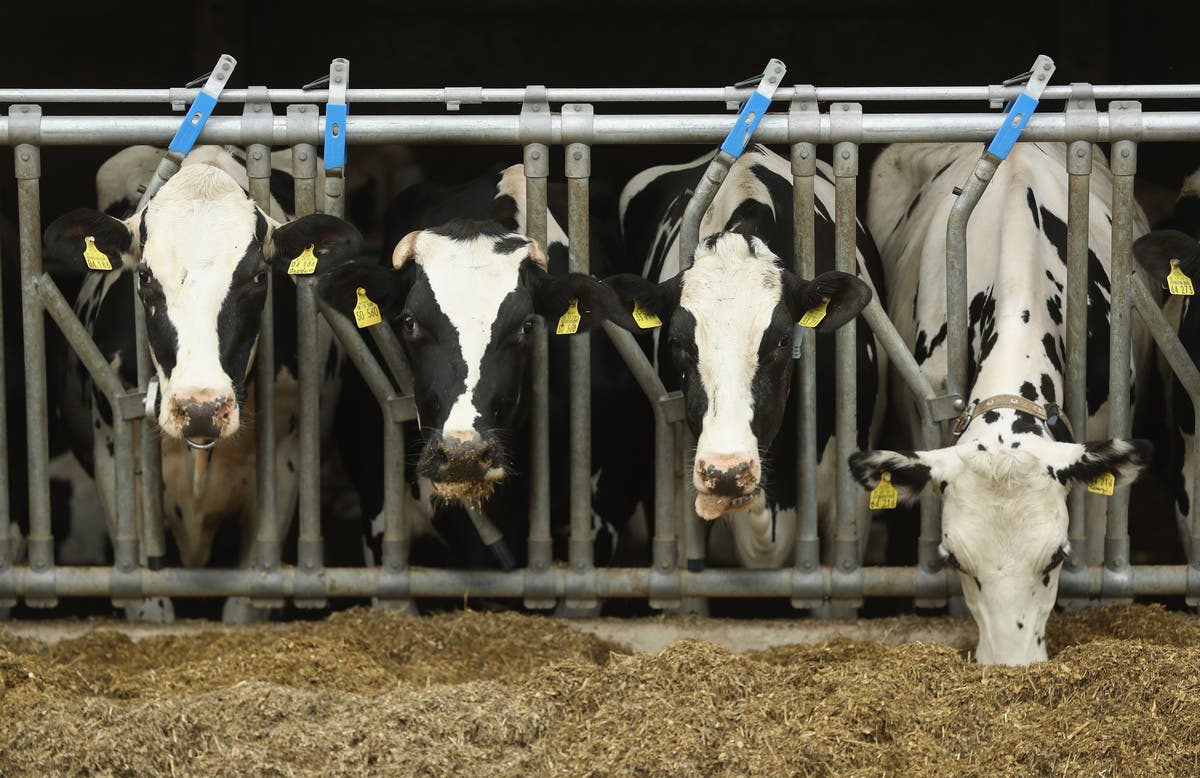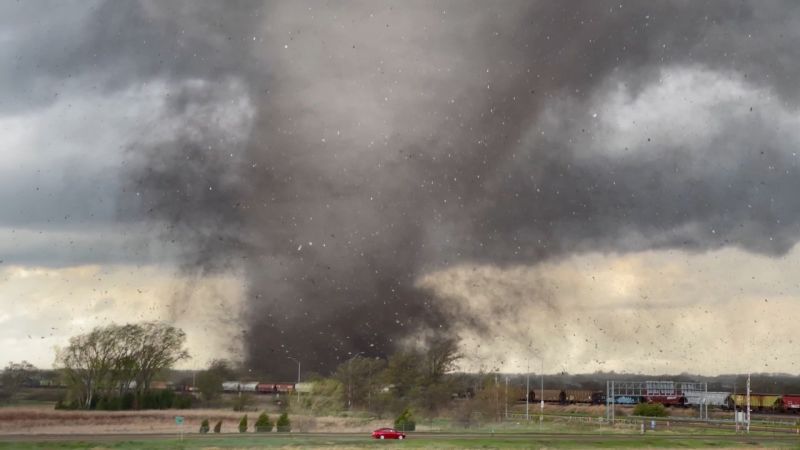Sharp rise in women drinking themselves to death
The number of women succumbing to alcohol-related diseases has witnessed a dramatic surge.
unbranded – Newsworthy
Heather Hann’s skin and eyes started to turn yellow around the time she turned 32. She knew exactly what it was. For the 13 years prior, she was an alcoholic.
“I look like the Simpsons now,” she told Sheila Gallaway, her older sister by almost two years. When her jaundice, a common symptom of liver damage, became too glaring, Heather hid from friends and stopped going to family events. But her drinking did not stop.
“She no longer drank water at some point,” Sheila said. “Heather drank just vodka.”
By 2022, Heather was 35 and looked unrecognizable. Her skin changed from yellowish to grayish and a picture of her urine she sent to Sheila showed it was almost black. She vomited constantly. According to doctors, Heather’s liver was severely scarred.
But still, she could not give up drinking. Sheila said she had simply given up. She believes her sister’s drinking had increased during the 2020 COVID-19 restrictions and worsened her liver problem.
“That was when her skin turned yellow,” she said. “It was that way till 2022 when it got worse.”
Arizona residents drank more than normal in 2020 as COVID-19 lockdowns forced people to stay indoors and working from home became a new normal. But only a few years later, the effect of that drinking is manifesting in high hospitalization rates for liver diseases, especially alcoholic cirrhosis, an Arizona Republic analysis of the state’s hospitalization records shows.
On the morning of May 24, 2022, Sheila received a panicked call that Heather was unresponsive.
Sheila lived just four blocks away. She jumped in her car and sped past a fire department’s ambulance heading to the house in central Phoenix. She arrived to find her mother, who lived with Heather, performing CPR. Sheila took over before the first responders arrived. But Heather would never wake up.
“I knew she had been gone for a while when I took over the CPR,” Sheila said.
She had succumbed to alcoholic cirrhosis, a permanent and severe scarring of the liver from chronic alcohol use.
What The Republic found in hospital records
Chronic liver disease or cirrhosis is Arizona’s ninth leading cause of death, according to the Arizona Department of Health Services, but the post-2020 trajectory of the disease is stark.
The Republic analyzed over 5 million hospitalization records from 2016 to 2022 with a focus on diseases that landed people in the hospital.
Across almost all common diseases, hospitalization rates dipped in 2020 due to COVID-19 restrictions. By 2022, hospitalization rates for these diseases — such as stroke, heart disease, diabetes, hypertension and cancer — were either back to pre-COVID, 2019 levels or slightly below them.
However, the numbers moved in a different direction for alcoholic liver disease, especially alcoholic cirrhosis. The hospitalization rate for alcoholic liver disease increased by 5% in 2020 over the previous year. For alcoholic cirrhosis, the increase was 9%.
By 2022, the rate of alcoholic liver disease had increased by 23% over pre-pandemic levels. Hospitalizations for alcoholic cirrhosis shot up 42%.
In contrast, the hospitalization rate for non-alcoholic liver diseases plummeted during the pandemic like the other chronic diseases and has not risen above 2019 levels. Those liver diseases also can be lethal.
The spike in hospitalization rate for alcoholic liver disease — which consists of alcoholic cirrhosis, alcoholic hepatitis and alcoholic fatty liver — is a nationwide trend.
The per capita consumption of alcohol increased during the pandemic more than any time since 1968, according to Dr. Aaron White, the head of the epidemiology and biometry branch at the National Institute on Alcohol Abuse and Alcoholism.
“All of that extra alcohol resulted in extra harm, particularly for people with a history of heavy alcohol use and alcohol use disorder,” he told The Republic.
Deaths from alcohol-related liver disease increased across the country by more than 22% in 2020 over the previous year, according to White.
Arizona ranked 12th nationwide for the death rate for alcohol-related liver diseases in 2019. Two years later, the state was in eighth place at 15.5 age-adjusted deaths per 100,000 people.
Legacy of pandemic drinking is manifesting
One study on alcohol dependency during COVID-19 lockdowns led by William Killgore, a professor of psychiatry at the University of Arizona, found “dramatic increases in harmful alcohol consumption observed over the first six months of the COVID-19 pandemic.”
There are “grave concerns” for the health implications of this, like liver disease, the study said.
The Liver Institute in Tucson, for instance, is seeing this firsthand, according to Dr. Shahid Habib, its medical director.
Alcohol liver disease and fatty liver disease make up the majority of cases the facility is seeing as the volume of cases increased, he said.
Killgore agrees the increase in alcoholic liver diseases is likely related to the rate of alcohol consumption during the pandemic, but he said he could not give a more definitive response as he had not studied the link.
While the pandemic was a tipping point for many people who had chronic liver disease, the damage would likely have started long before 2020, experts told The Republic. The increased consumption during the pandemic put too much pressure on their already damaged livers, they said.
Someone “drinks alcohol every day, like six or seven beers for 20 years, then, all of a sudden during the pandemic, they doubled that. That pushed them over the edge,” said Dr. Frank LoVecchio, the medical director of clinical research at Arizona State University’s College of Health Solutions.
Journey to liver damage for one Phoenix woman
Heather’s autopsy report simply states that she died from complications of chronic ethyl (ETOH) use, a medical term for alcohol use.
Shelia blames Heather’s alcoholism on a troubled, long-term relationship. Heather told family members that her boyfriend wouldn’t let her seek rehab.
Sheila said Heather was her best friend. Sheila remembers a fun-filled childhood, goofing off with her sister and riding colorful bikes around their Maryvale neighborhood with friends. In their adolescence, they drank normally and nothing beyond what their peers drank, Sheila said.
Heather was a dreamer. She would talk about owning a beautiful house of her own, visiting the beach often and traveling.
Then in high school, she met her boyfriend, with whom she would share an apartment for about 17 years. Heather loved to teach. She became a substitute teacher.
When she became sick from drinking, Sheila would take her to the hospital.
Heather eventually ended her relationship with her boyfriend in November 2021. By that time, she’d already had the jaundice that signaled her advanced liver disease for nearly two years. Then she spiraled.
After she was diagnosed with alcoholic cirrhosis, she was in and out of the hospital in the last months of her life.
According to the Mayo Clinic, alcoholic cirrhosis occurs because the liver repairs itself each time it is injured through excessive drinking or infection. Each time, scar tissues form.
Despite the hospital visits and the dire prognosis of her disease, Heather would not stop drinking. A liver transplant wasn’t on the table — she was too far gone for that, Sheila said.
“Heather simply stopped trying,” Sheila said. “She knew I would take care of her daughter if she passed.”
A family battle with liver disease
For more than a decade, Sheila watched her sister deal with alcoholism while also facing her own battle with alcohol addiction.
In her relationships, things would start out great, and then turn abusive, she said. Alcohol and drugs were forced on her by past partners.
She got to a point where she often needed to drink from the moment she woke up.
“I drank between four to six tall cans of beer every day,” she said. This went on for 15 years.
In 2019, she was diagnosed with alcoholic fatty liver, the first stage of alcoholic liver disease.
Three years later, she watched her sister die from an advanced form of the disease.
She was in and out of sobriety after her fatty liver diagnosis but after Heather died she began heavily drinking again, wracked with guilt about her inability to keep her younger sister alive. That changed in August 2023, and she has stayed sober since.
Despite Sheila’s guilt, one expert said Heather would have required tremendous help beyond what her sister could offer to stay clean; alcohol and substance addiction comes with inherent biological predispositions.
Even the prospect of imminent death would not force people with alcohol addiction or other substance abuse disorders to seek help, said Mike Japenga, the program director of Awakening Recovery Center, an addiction center in Tempe.
He said substance use disorder affects how the brain receives emotional reward and suspends the ability to see psychological, social and medical problems caused or exacerbated by a substance.
“Only a small percentage of people are biochemically predisposed towards becoming addicts,” Japenga said. “The vast majority of people who ingest chemicals for the high never pay the price of addiction or death because of this.”
Reach reporter Kunle Falayi at [email protected] or 480-268-1504.

Dr. Debi Johnson is a medical expert and health journalist dedicated to promoting well-being. With a background in medicine, she offers evidence-based insights into health trends and wellness practices. Beyond her reporting, Dr. Debi enjoys hiking, yoga, and empowering others to lead healthier lives.







